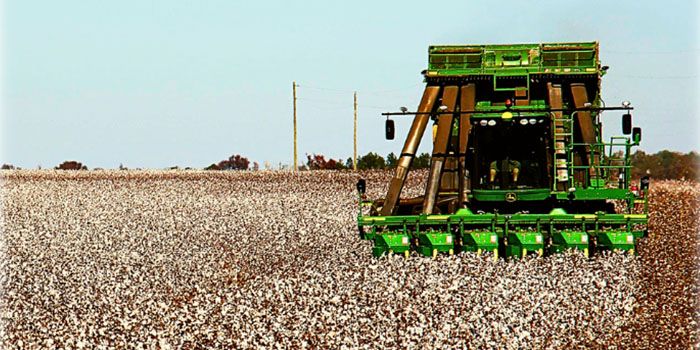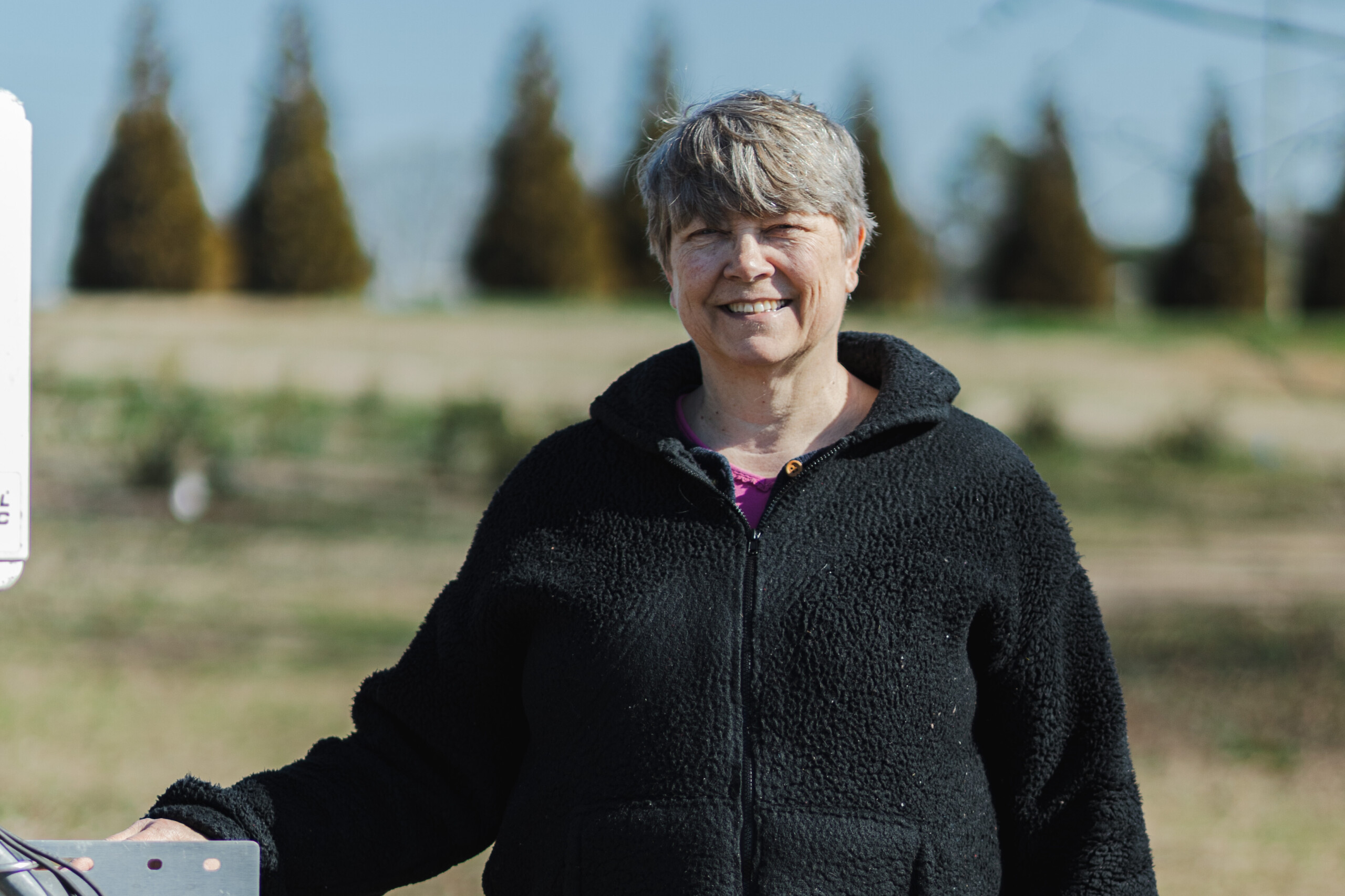- Vegetatively Propagated (Sprigged) Varieties
- Other Varieties
- Seed Propagated Varieties
- Recommended Cultivars
- Tables
Unlike most other agronomic crops, the selection of a bermudagrass cultivar is a long-term commitment. Bermudagrass is a warm-season perennial grass that can persist and withstand the rigors of grazing and hay production for decades. Establishing it, however, is a significant investment that pays off over the long-term. It is important to understand the characteristics of the different cultivars. This publication shares the collective experience of research and extension personnel on bermudagrass cultivars that are (or could be) grown in Georgia. The recommendations and descriptions of these cultivars are the result of numerous research experiments and on-farm observations within Georgia and surrounding states since the late1930s.
Vegetatively Propagated (Sprigged) Varieties
Tifton 85 is a hybrid from a cross between cold-susceptible but higher digestible Tifton 68 andan introduction from South Africa with greater cold tolerance. It was released in 1993 by Dr.Glenn W. Burton, principal geneticist with the USDA-ARS at the Coastal Plain ExperimentStation (CPES) in Tifton. Tifton 85 can be established from sprigs or from clippings (“tops”). Itis one of the few varieties that is easily distinguishable from other bermudagrass varieties, sinceit has larger stems, broader leaves, a darker green color, and is taller than most bermudagrasshybrids. It develops few rhizomes but many very large, rapidly spreading stolons. It consistentlyprovides the highest yields in variety trials throughout Georgia and retains the high digestibilitytraits of Tifton 68. Tifton 85 is the most digestible of the recom-mended bermudagrass varieties(Tables 1a & 1b). However, the combination of heavy yields and thick stems slows hay curing,and Tifton 85 will often take one-half to one day longer to dry to suitable baling moistures thanother varieties under similar conditions. Since it is not highly winter-hardy, it is common for aTifton 85 stand to be substantially thinned during winter in the Piedmont region. Thus, Tifton 85is currently recommended only for the southern two-thirds of Georgia (roughly south of Athensand I-20). It can be successfully grown farther north if you are willing to accept the increasedrisk of stand loss.
Russell, a vegetatively propagated bermuda-grass, was jointly released by Auburn Universityand Louisiana State University in 1994. Russell was discovered in the late 1970s in RussellCounty, Alabama, by local County Agent Donald Bice. The field had originally been planted toCallie, a variety very susceptible to winter-kill. The excellent winter-hardiness of Russell made itclear this grass was indeed unique (likely either a mutation or hybrid of Callie). When moistureis not limited, Russell may out-yield all bermudagrasses in the first harvest and match the highseasonal yield totals of Tifton 85. Russell is also noted to spread rapidly and has been ratedhigher for winter-hardiness than Coastal. Forage height at the appropriate harvest intervals istypically shorter than other high-yielding bermudagrass hybrids, but the forage is quite dense.Despite its high-yield potential, Russell is somewhat less drought tolerant than Tifton 85.Furthermore, Russell is substantially less digestible than Tifton 85 and slightly less than or equalto Coastal. Russell produces both rhizomes and stolons, develops one of the best root systems ofall the hybrids, and forms a dense sod that holds up well under grazing. Russell can beestablished from sprigs or clippings (tops) and often is quicker to establish than Tifton 85.Russell is a solid variety that is recommended throughout Georgia.
Tifton 44, a winter-hardy hybrid bermudagrass, was released in 1978. Tifton 44 is a crossbetween Coastal and a winter-hardy bermudagrass found near a railroad track in Berlin,Germany. Its winter-hardiness allows successful growth as far north as Kentucky and Virginia,more than 100 miles north of the recommended range of Coastal bermudagrass. This hybridproduces more rhizomes, has finer stems, is darker green, and forms a denser sod than Coastal. Itis better adapted to the northern areas of the bermudagrass growing regions of the country thanmany other varieties. Though it can perform well in the Coastal Plain, Tifton 44 will likely yieldless in this area than the other recommended hybrids. It is slower to establish than many othervarieties and may not establish well if propagated from clippings (tops). As a result of this slowestablishment, it usually will not provide any significant grazing/haying during the establishmentyear. Tifton 44 bermudagrass produces a higher-quality forage than Coastal or Alicia, averaging7 percent higher in digestibility than Coastal and 10 percent higher than Alicia. Hay yields ofTifton 44 are similar to Coastal. Tifton 44 starts growing in early spring and grows later into thefall than Coastal or Alicia in northern latitudes.
Coastal, released in 1943, is the first hybrid forage bermudagrass from Dr. Burton’s work at theCPES. It is an F1 hybrid between an introduction from South Africa and a prolific bermudagrassfound in a south Georgia cotton patch. Named for the experiment station where it was bred,Coastal is among the most successful forage variety releases in the past century as it makes upsome 15 million acres of the hay and pasture land in the southern United States. It is the standardagainst which other varieties are measured. Coastal is a tall-growing, intermediate, coarse-stemmed type, has both rhizomes and stolons, produces few viable seed, and has excellentdrought tolerance. Coastal establishes well from both sprigs and clippings (tops). In Georgia,Coastal is best adapted to the Coastal Plain and lower Piedmont areas. It is not as cold tolerant asTifton 44 or Russell and could winter-kill in the mountains. Coastal produces twice as muchforage as common bermudagrass, and its forage quality is superior to common Alicia and a fewother varieties when properly managed.
Noteworthy Upcoming Release
Coastcross II is a mutant selection from Coastcross I, a bermudagrass that had very poorwinter-hardiness. Coastcross II is currently in the process of being released by Dr. WilliamAnderson, Research Geneticist with the USDA-ARS’s Crop Genetics and Breeding ResearchUnit at the CPES. Coastcross II grows taller and has broader, softer leaves. Though it is lesswinter-hardy than Coastal, it is similar to Tifton 85 in that it produces very high yields, and hassuperior quality and improved digestibility. This hybrid can be established from sprigs andtops; it has rapidly spreading stolons but develops few rhizomes.
Other Varieties
Alicia was selected from introductions from Africa and marketed by a Texas businessman in theearly 1970s. Alicia is relatively easy to establish from sprigs or clippings (tops) and produceshigh hay yields similar to Coastal and Tifton 44. Its forage is much less digestible and lower inquality than Tifton 85 and even Coastal. Alicia is very susceptible to leaf-spot and may notconsistently provide a thick stand. As a result, Alicia is not recommended in Georgia.
Callie, released by Mississippi State University, is a selection from a group of highly digestiblebermudagrasses introduced from Kenya. Callie produces good quality forage and yields wellwhere it is adapted, but it is not cold tolerant and will winter-kill in Georgia during severewinters. Therefore, Callie is not recommended in Georgia.
Coastcross I, released by Dr. Burton in 1967, is a hybrid of Coastal and a very digestiblebermudagrass from Kenya. Coastcross I grows taller, has broader, softer leaves and produceshigher quality forage than Coastal, but it is not winter-hardy. Coastcross I will winter-kill insouth Georgia during severe winters and, therefore, is not recommended in Georgia.
Grazer was bred at Tifton as a hybrid of a selection found in the Alps of north Italy andintroductions from Kenya. Yield performance was poor (10-15% less than Coastal) in Tifton.Excellent digestibility and performance in Louisiana led to the release of Grazer there in 1985.Poor yields prevent its recommendation for Georgia.
Midland was released in 1953 by Dr. Burton and colleagues in Oklahoma. A hybrid of Coastaland a winter-hardy common from Indiana, it is similar to Coastal in yield, growth habit, andforage quality. Some Midland stands still exist in north Georgia; however, the variety has largelybeen replaced by Tifton 44. It is more widely grown north of the Coastal bermudagrass belt.Midland 99, a newer selection from this line, has a wider geographic range of adaptation. ForGeorgia, Midland fails to yield or persist as well as Tifton 44, so it is not recommended.
Tifton 68 was released from Dr. Burton’s breeding program at the CPES in 1984. It is a hybrid oftwo highly digestible plant introductions. It has large stems and stolons (no rhizomes) that spreadrapidly. However, Tifton 68 has poor winter-hardiness and is not recommended.
Tifton 78, released in 1984, is a hybrid bermudagrass. Tifton 78 is the best of many crosses madebetween Tifton 44 and Callie. Compared with Coastal, Tifton 78 grows taller, has larger stemsand a similar rhizome system, spreads much faster, is more easily established (sprigs and tops),and starts growth earlier in the spring. In tests at Tifton, this hybrid produced 25 percent moredry matter (hay yields) than Coastal and averaged 7.4 percent higher in digestibility. It hasexcellent resistance to leaf-spot, a foliage disease that destroys leaf tissue and reduces yields andquality. Tifton 78 is less winter-hardy than Tifton 44. It is well-adapted throughout the CoastalPlain and may be grown to a limited degree in the lower Piedmont. Plantings in the Piedmontmay experience some stand thinning during winter, so Tifton 78 is recommended only for areassouth of the Fall Line. Tifton 85 was released soon after Tifton 78. Tifton 85 has higher yieldsand quality than Tifton 78. As a result, Tifton 85 is a better choice for new plantings than Tifton78 in South Georgia and the Coastal Plain region.
World Feeder, a naturally-developed, vegetatively propagated bermudagrass, was found by aproducer in Oklahoma and has been marketed by Agricultural Enterprises of Oklahoma City.World Feeder is winter-hardy, but has demonstrated poor yields and digestibility in trials anddemonstration plots in Georgia and several other states. It is very susceptible to leaf-spotdiseases leading to many reports of stand decline/failure in World Feeder plantings in Georgia.Therefore, it is not recommended for Georgia.
Several other vegetatively propagated bermudagrass varieties are available, many of which arereleases from university or USDA breeding efforts. Among these, Brazos, Hardie, Oklan, andQuickstand have not performed well in Georgia or are known to not be well-adapted. Of course,many others have not been adequately evaluated in Georgia including Florakirk, Greenfield, HillFarm Coastcross-I, Jiggs, Lancaster, LeGrange, Luling, Naiser, Scheffield, Summerall,Suwannee, Zimmerly, and any others not listed here.
Seed Propagated Varieties
Seeded bermudagrass varieties generally have low yields and low forage quality when comparedto improved hybrids. However, sprigging an improved hybrid bermudagrass is expensive andrisky, especially where small acreages drive up the cost per acre and rolling terrain leaves soilprone to erosion for a significant period of time. Producers often find that planting seed is themost feasible establishment option.
Ironically, the most hardy and persistent varieties will often produce little seed. These varietiescan be expensive. Seed companies will often help offset this problem by offering seed blends, soit is important to closely evaluate and compare seed tags. These blends usually contain one ormore of the top varieties in mixtures with varieties that are more prolific seed producers (Table 2). Though these more prolific seed producers (such as Giant and Jackpot) grow very well in theestablishment year, they are not usually persistent and are often very short lived in Georgia.However, by the time these components of the mix die out, the more persistent varieties may becapable of filling in the gaps. Unfortunately, these gaps often exist in early spring when weedsare growing but the bermudagrass is not. Alternatively, companies may fill out a blend bymixing in common bermudagrass, some or all of which may have been hulled to remove the seedhusk for faster germination. These blends may be prone to revert to common (that is, commonwill ultimately dominate the stand). Despite the expense, seeding recommended cultivars alone(not in a blend) is more likely to lead to better results over the long-term because these varietiesare more hardy, produce higher yields, limit weed intrusion, and maintain better quality.
Recommended Cultivars
Cheyenne, a seeded bermudagrass cultivar, has exceptionally good persistence, is winter-hardyin Georgia, and consistently performed well in yield trials throughout the state (Tables 3a and3b). The forage quality (protein, fiber, and digestibility) of Cheyenne is quite similar to Coastal,but it is slightly lower than CD90160 and KF-194. Cheyenne has not been a prolific seedproducer. This has limited the availability of seed from this cultivar. Recently, clones ofCheyenne were selected for improved seed production by Texas A&M University and SeedsWest. The product of this selection, Cheyenne II, has been shown to match the yield andpersistence of Cheyenne in initial evaluations. Cheyenne II is now being sold and used in seedblends such as Ranchero Frio.
CD90160, a seeded bermudagrass cultivar, is most often sold in seed blends such as Vaquero,Gaucho, Sungrazer Plus, and Sungrazer 777. When grown alone, this cultivar matches the yield,winter-hardiness, and persistence of Cheyenne. CD90160 has also shown to have higher protein(increased by 20%) and digestible nutrients (increased by 14%) than Cheyenne.
KF-194 is often sold in seed blends such as Sungrazer Plus and Sungrazer 777. Like CD90160,this cultivar also matches the yield, winter-hardiness, and persistence of Cheyenne. KF-194shares the high forage quality characteristics of CD90160.
Other Varieties
Common bermudagrass is certainly well-adapted to the humid South and quickly became awidespread weed in cultivated crops after its introduction in the 18th century. Common producesviable seed and spreads by stolons and rhizomes. Once established, it is difficult to eradicate.Common bermudagrass is present, usually in combination with fescue or as a contaminant inimproved bermudagrass pastures, on more than 400,000 acres in Georgia. It is hardy, forms adense sod, and can be established from seed and maintained on infertile soils. AlthoughCommon does not provide high yields (often 50% as much hay per acre as Coastal), it can beeffectively used in forage programs to provide summer grazing. In north Georgia, it is best usedin combination with fescue and clover. Though Common bermudagrass is an important part ofpastures and hayfields in Georgia, it is not recommended for new seedings simply becauseimproved seeded varieties (recommended above) will consistently out-yield and provide higherquality forage than Common.
Many other seeded bermudagrass varieties are available. Most of these releases are from privatecompanies and turfgrass breeding efforts. Many have been shown to have persistence problemsor yield poorly, such as Giant, Guymon, Jackpot, and Wrangler, and are therefore notrecommended. Mirage, Mohawk, Pyramid, and many other varieties not listed have not beenadequately evaluated under Georgia’s conditions.
Tables









